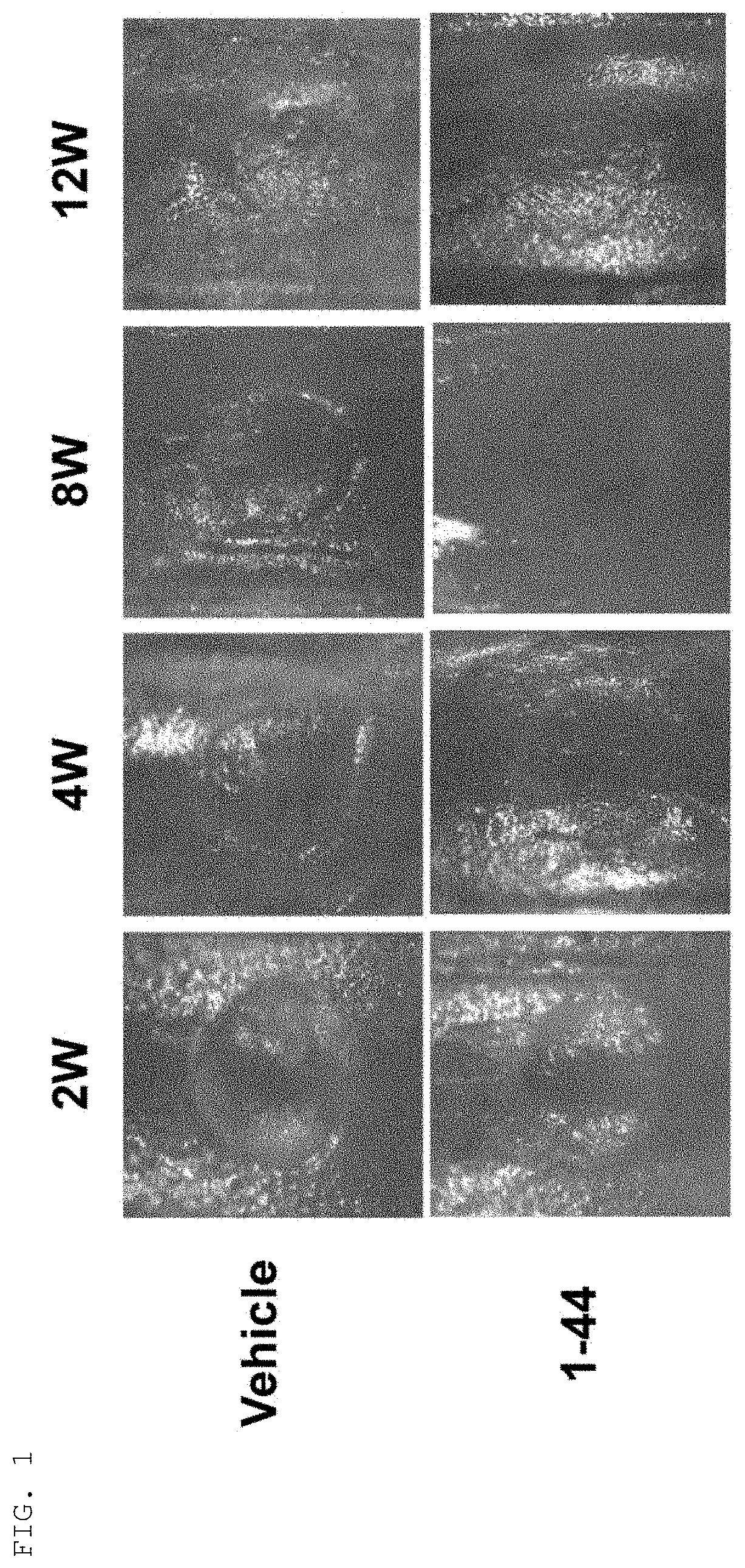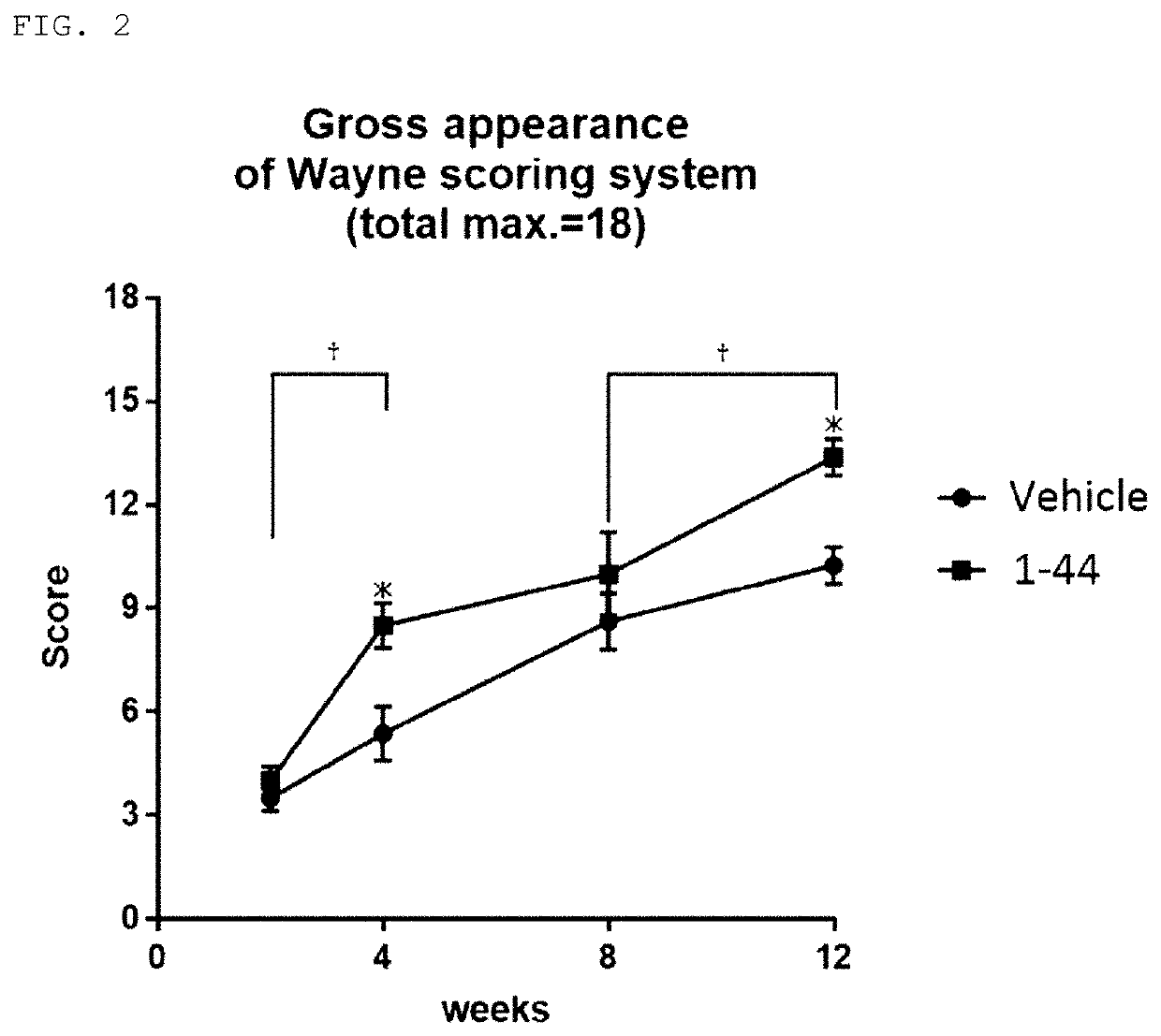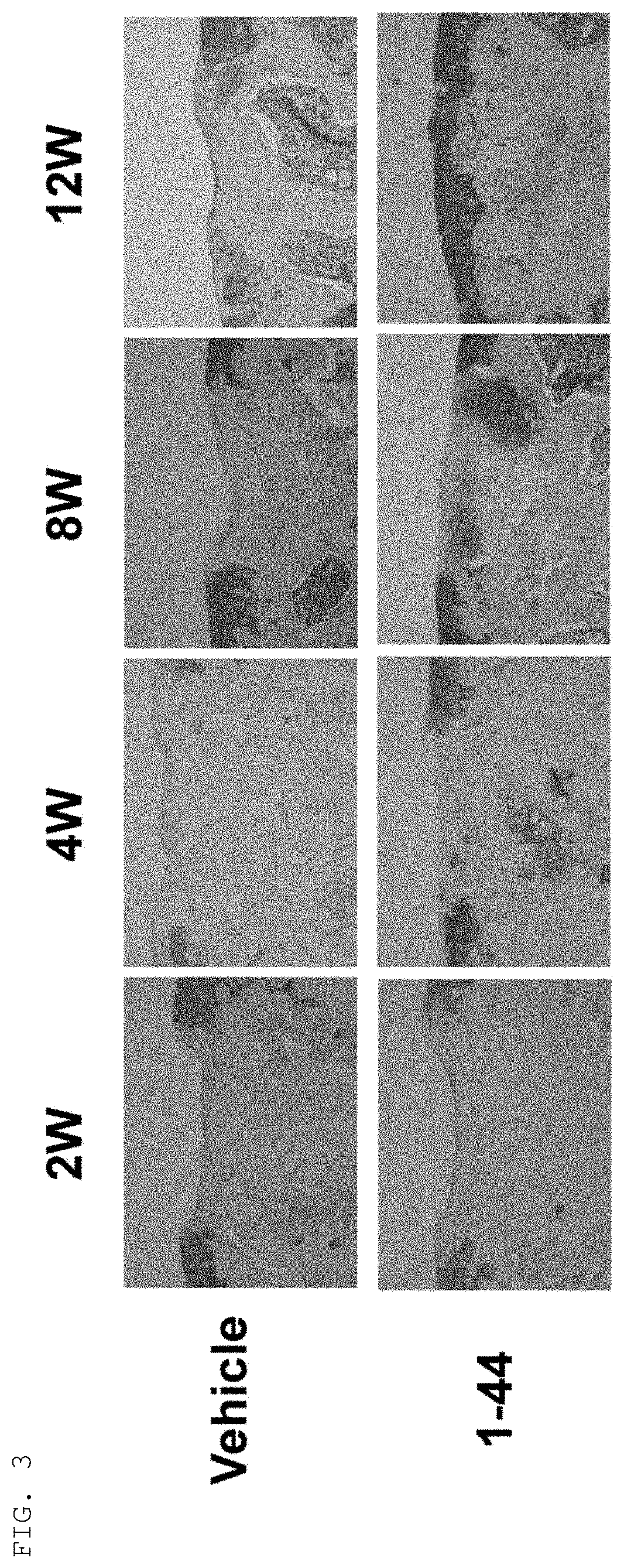Therapeutic agent for cartilage disorder
a cartilage disorder and therapeutic agent technology, applied in the field of pharmaceutical compositions, can solve the problems of traumatic articular cartilage defect, less repairability of cartilage tissue such as articular cartilage, and almost impossible natural regeneration, and achieve the effect of preventing traumatic articular cartilage defects
- Summary
- Abstract
- Description
- Claims
- Application Information
AI Technical Summary
Benefits of technology
Problems solved by technology
Method used
Image
Examples
example 1
[0050]Evaluation of efficacy of HMGB1 fragment peptide on articular cartilage defect
(1) Materials and Methods
i) Preparation of Agent
[0051]A peptide consisting of amino acid residues 1-44 (SEQ ID NO: 1) of human-derived HMGB1 protein was chemically synthesized by a solid-phase method. Hereinafter, the HMGB1 fragment peptide is referred to as HMGB1 peptide (1-44), and in the drawings corresponding to Examples, the peptide is simply indicated as “1-44”.
ii) Creation of Cartilage Defect Model Mouse
[0052]C57BL / 6J mice (6-7 weeks old, male, wild type) were purchased from CLEA Japan, Inc., and then acclimated to animal facilities until they were 8 weeks old (weighing approximately 25 g at 8 weeks old). While the mice were under 1.5-2.0% (v / v) isoflurane inhalation anesthesia, shaving was performed on the lower extremity of the side to create a cartilage defect, and a longitudinal skin incision of approximately 1 cm was applied with scissors to the middle of the knee joint. An articular diss...
example 2
Tissue Staining of Articular Cartilage
Methods
[0057]Cartilage defect model mice were created in the same manner as in Example 1 and were bred continuously. Tissues containing the cartilage defect creation sites of knee joints were removed from the mice at 12 weeks post-operative to create paraffin sections, and the sections were subjected to immunostaining with anti-type II collagen antibodies and safranin O staining. In addition, cartilage tissues of knee joints were removed from normal mice of the same strain to create paraffin sections, and the sections were subjected to immunostaining of type II collagen and safranin O staining in the same way.
Results
[0058]Tissues of cartilage defect creation sites of knee joints at 12 weeks post-operative in the cartilage defect model mice (i.e., tissues left to natural recovery after creation of cartilage defects) showed little positive response in either safranin O staining or immunostaining of type II collagen, thus confirming that they were ...
PUM
| Property | Measurement | Unit |
|---|---|---|
| Fraction | aaaaa | aaaaa |
Abstract
Description
Claims
Application Information
 Login to View More
Login to View More - R&D
- Intellectual Property
- Life Sciences
- Materials
- Tech Scout
- Unparalleled Data Quality
- Higher Quality Content
- 60% Fewer Hallucinations
Browse by: Latest US Patents, China's latest patents, Technical Efficacy Thesaurus, Application Domain, Technology Topic, Popular Technical Reports.
© 2025 PatSnap. All rights reserved.Legal|Privacy policy|Modern Slavery Act Transparency Statement|Sitemap|About US| Contact US: help@patsnap.com



